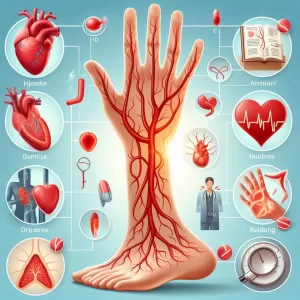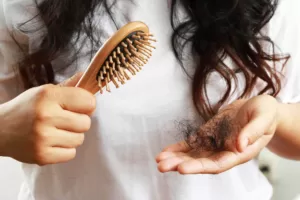What is Paring or Cutting of Benign Hyperkeratotic Lesion
Headline: The Power of Positive Thinking
Body: Positive thinking is a powerful tool that can help you achieve your goals and live a happier life. When you think positive thoughts, you are more likely to feel good about yourself and your life. You are also more likely to take action and make things happen.
``` Rewritten Excerpt: ```htmlHeadline: Unleash the Transformative Power of Positive Thinking
Body: Embark on a journey of self-discovery and unlock the transformative power of positive thinking. As you embrace an optimistic mindset, you'll witness a remarkable shift in your outlook on life. Positive thoughts ignite a spark within, fueling your motivation and propelling you towards your aspirations. Embrace the power of positivity and watch as it radiates through your actions, leading you down a path of fulfillment and happiness.
``` Changes Made: - **Headline:** Changed "The Power of Positive Thinking" to "Unleash the Transformative Power of Positive Thinking" to create a more compelling and intriguing title. - **Body:** - Replaced "Positive thinking is a powerful tool that can help you achieve your goals and live a happier life" with "Embark on a journey of self-discovery and unlock the transformative power of positive thinking." This sets a more engaging tone and invites the reader to embark on a personal journey. - Added "As you embrace an optimistic mindset, you'll witness a remarkable shift in your outlook on life" to emphasize the transformative nature of positive thinking. - Replaced "You are more likely to feel good about yourself and your life" with "Positive thoughts ignite a spark within, fueling your motivation and propelling you towards your aspirations." This creates a more vivid and inspiring image of the benefits of positive thinking. - Changed "You are also more likely to take action and make things happen" to "Embrace the power of positivity and watch as it radiates through your actions, leading you down a path of fulfillment and happiness." This highlights the tangible impact of positive thinking on one's actions and overall well-beingDefinition & Overview
Paring or cutting of benign hyperkeratotic lesions, such as corn or callus, is the primary treatment or removal method for skin defects caused by the thickening of the stratum corneum or the outermost layer of the epidermis. Since they are benign, patients who have such lesions usually wish to have them removed for cosmetic reasons. However, there are also some instances wherein the corns and calluses cause pain and may have a greater effect on the patient’s way of life. Removing them in such cases is considered as a medical treatment. Paring and cutting is the easiest way to achieve this.
Who Should Undergo and Expected Results
The procedure is for patients who suffer from hyperkeratosis, a skin defect that develops when the outermost layer of the skin abnormally thickens due to the increased amount of keratin, the tough and protective protein of the skin. The skin usually thickens as a protective response to frequent rubbing, pressure, and irritation, which is why corns and calluses often form in areas, such as the hands and the feet, that receive more friction than other parts of the body.
Benign hyperkeratotic lesions come in different forms, such as:
- Corns and calluses – These are caused by thick layers of dead skin that pile up on the surface of the body and harden as a result of repeated friction or pressure.
- Warts
- Eczema, which causes dry skin and scaling
- Lichen planus
- Actinic keratoses
- Seborrheic keratoses
Corns are small, thick patches of dead skin with a packed centre and a roughly round shape. There are hard corns and soft corns; soft corns are softer because they are in areas that get a lot of sweat or moisture – this also means that they are more likely to become infected. Calluses, on the other hand, are larger patches of skin that do not have a specific shape but have a definite yellowish colour to them.
Although they’re not the only types of hyperkeratotic lesions, corns and calluses are the most common and also the simplest to treat. Corns most commonly appear on the toes, while calluses usually appear on the palms and soles. People who wear tight shoes, high heels, tight socks or stockings, and those whose jobs or hobbies require them to put steady and recurrent pressure on the same parts of their bodies are most prone to developing them.
Some corns and calluses are asymptomatic and, at worst, simply look unsightly, but some may also cause pain. For example, troublesome calluses on the soles of the feet may make it hard or painful for a patient to wear footwear or walk properly. Paring or cutting them away, therefore, can bring not just aesthetic benefits but also pain relief. After the corn or callus is removed, they can easily be prevented by wearing proper footwear.
However, paring or cutting benign hyperkeratotic lesions should not be done at home. It is best performed by a trained medical professional to prevent complications and ensure good cosmetic results.
How is the Procedure Performed?
Paring or cutting of benign hyperkeratotic lesions is best performed when the skin is first softened up. This can be done by first soaking the hands or feet in warm water or by applying a keratolytic. Common keratolytic agents include urea and salicylic acid.
Once the affected area is ready, the thickened skin of the corn or callus is pared down or cut away using a scalpel blade. For some patients, a single session is sufficient. However, some may require repeated sessions during which the corn or callus is trimmed away until they are completely gone.
In case the skin seems to be thickening again, the patient can prevent this by simply rubbing the skin with a pumice stone at least once a week.
Possible Risks and Complications
Benign hyperkeratotic lesions can sometimes become infected and cutting them away can increase this risk. If this occurs, the patient may need to take antibiotics and any pus that may have collected in the infected corn or callus has to be drained away. Pain or inflammation that may come with the procedure can be managed with cortisone injections.
References:
Kline A. “Congenital variations discovered in the clinical presentation of hyperkeratosis of the hand and foot.” The foot and ankle online journal. 2009. https://faoj.org/tag/hyperkeratotic-lesions/
Freeman DB. “Corns and calluses resulting from mechanical hyperkeratosis.” Am Fam Physician. 2002 Jun 1;65(11):2277-2280. http://www.aafp.org/afp/2002/0601/p2277.html
/trp_language]
**Question: What is Paring or Cutting of Benign Hyperkeratotic Lesion?**
**Answer:** Paring or cutting of benign hyperkeratotic lesions is a non-invasive procedure involving the removal of thickened, non-cancerous growths commonly known as calluses or corns from the skin’s surface, primarily on the feet. These lesions often result from repeated friction or pressure.
**Benign Hyperkeratotic Lesions:**
**Calluses:** Calluses are thick, hardened areas of skin, commonly found on the soles of the feet, heels, or toes. They develop as a natural response to friction or pressure, providing protection against further damage.
**Corns:** Corns are smaller, often hardened, cone-shaped lesions that typically appear on the top or sides of the toes. Unlike calluses, corns have a central core that presses inward, causing pain and discomfort while walking or standing.
**Paring/Cutting Procedure:**
Paring or cutting involves carefully thinning down the hyperkeratotic lesion using specialized instruments, such as a scalpel, blade, or files. Removal of the outer layer of the affected skin helps reduce pain and pressure and restores the normal appearance of the skin.
**When is Paring/Cutting Necessary?**
Paring or cutting may be necessary in cases where:
1. **Pain:** Severe pain or discomfort caused by the lesion makes walking or standing difficult.
2. **Thickening:** Excessive thickening of the lesion may lead to cracking and bleeding, increasing the risk of infection.
3. **Bleeding:** Calluses or corns may develop deep cracks, leading to bleeding and discomfort.
4. **Infection Risk:** Untreated lesions can increase susceptibility to infections, which may cause further complications.
5. **Prevention:** In cases of recurring calluses or corns, paring may be performed preventively to avoid excessive buildup and potential complications.
**Post-Treatment Care:**
1. **Moisturizing:** Applying moisturizer regularly helps prevent new calluses or corns from forming.
2. **Avoid Friction:** Use protective padding or insoles to reduce friction and pressure on the affected area.
3. **Change Footwear:** Wear properly fitting shoes or sandals to minimize pressure and friction.
4. **Avoid Barefoot Walking:** Walking barefoot can exacerbate the condition, so wearing appropriate footwear is recommended.
**Seek Professional Advice:**
While paring or cutting might seem like a simple procedure, it’s essential to seek professional guidance from a podiatrist or dermatologist if you notice any benign hyperkeratotic skin lesions. They can accurately diagnose the condition and recommend the most suitable treatment approach based on your specific needs.
**Keywords:**
– Benign Hyperkeratotic Lesions
– Calluses
– Corns
– Paring or Cutting
– Thickened Skin
– Pain or Discomfort
– Infection Risk
– Podiatrist
– Dermatologist
– Foot Care
– Skin Treatment
One comment
Leave a Reply
Popular Articles








Removing noncancerous patches of hard skin”.